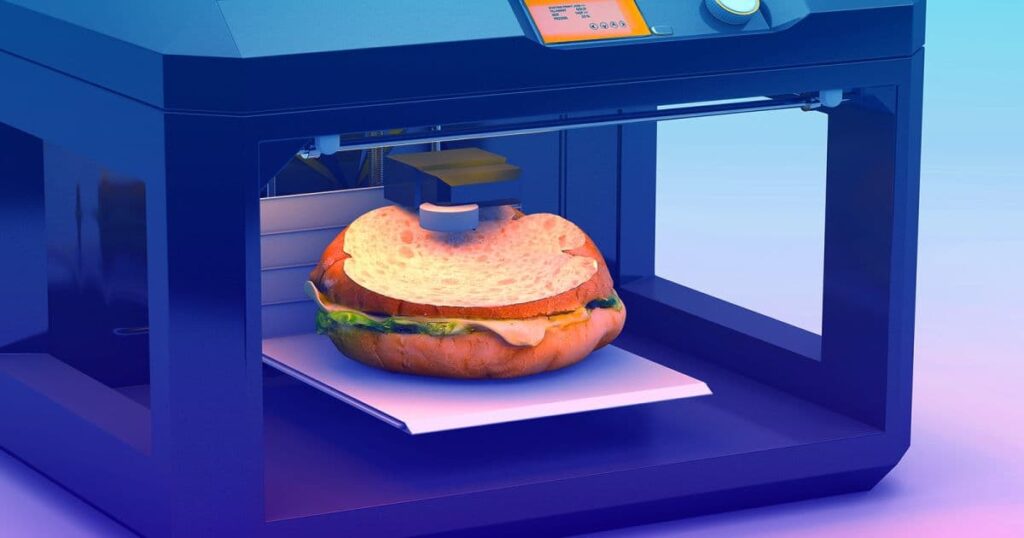The intersection of technology and culinary arts has ushered in a new era of food preparation and consumption. Among the most revolutionary advancements is 3D-printed food, a concept that might seem futuristic but is increasingly becoming a reality in kitchens and industries worldwide. This comprehensive guide explores the intricacies of 3D-printed food, from its operation to its potential impact on the culinary landscape.
Understanding 3D Printed Food
3D printed food involves creating edible items using a three-dimensional printer, which layers ingredients to form shapes and structures that can be complex and customized. This technology leverages computer-aided designs (CAD) to meticulously craft food items layer by layer, offering precision and customization beyond traditional cooking methods.
The Process of 3D Printing Food
The journey from digital blueprint to edible product involves several steps:
- Design: A digital model of the desired food item is created using CAD software;
- Preparation: Ingredients are prepared in a form compatible with the printer, usually as pastes, gels, or powders;
- Printing: The printer extrudes the ingredients according to the design, layer by layer, onto a build plate or directly onto a cooking surface;
- Cooking: Some 3D food printers are equipped with heating elements to cook the food during or after printing.
Benefits of 3D Printed Food
- Customization: Allows for intricate designs and nutritional customization;
- Efficiency: Reduces food waste by using precise ingredient quantities;
- Innovation: Enables the creation of new textures and flavor combinations.
Limitations and Challenges
- Speed: Printing complex items can be time-consuming;
- Material Limitations: Not all foods can be printed, especially those requiring specific textures or consistencies;
- Cost: High initial investment for 3D food printing equipment.
Comparison: Traditional Cooking vs. 3D Printed Food
| Feature | Traditional Cooking | 3D Printed Food |
|---|---|---|
| Customization | Limited by skill | High, software-controlled |
| Efficiency | Variable, often wasteful | High, minimal waste |
| Speed | Immediate to hours | Varies, can be slow |
| Cost | Varies, generally lower | Higher initial investment |
| Texture and Taste | Broad range | Limited by technology |
The Future of 3D Printed Food
The evolution of 3D food printing technology holds immense promise for personalized nutrition, sustainable food production, and culinary creativity. As advancements continue, the limitations of today may well become the strengths of tomorrow, making 3D-printed food an integral part of dining experiences.
Environmental Impact
The potential of 3D-printed food to minimize waste and optimize resource use presents a significant advantage in environmental sustainability. By precisely using ingredients and reducing the need for transportation and packaging, 3D-printed food can contribute to a more sustainable food system, lessening the ecological footprint associated with traditional food production and distribution methods.
Health and Nutrition
3D-printed food opens new avenues for personalized nutrition, allowing for the customization of food based on individual dietary needs and preferences. This could revolutionize the way we approach diet and health, making it easier to incorporate specific nutrients, control portion sizes, and manage dietary restrictions. The ability to fine-tune the nutritional content of meals promises to support healthier lifestyles and address nutritional deficiencies.
Video Guide
To answer all your questions, we have prepared a video for you. Enjoy watching it!
Conclusion
3D-printed food stands at the confluence of innovation, sustainability, and customization, offering a glimpse into the future of culinary arts. While challenges remain, the potential benefits of this technology—from reducing food waste to creating personalized nutrition plans—are profound. As we look forward, the continued development and adoption of 3D food printing technology will undoubtedly shape the future of how we prepare and consume food.
This exploration into the world of 3D-printed food reveals not just the technological prowess behind the process, but also its potential to revolutionize the culinary landscape. The blend of customization, efficiency, and innovation opens up new possibilities for food production and consumption, making it a fascinating area of development in the years to come.
